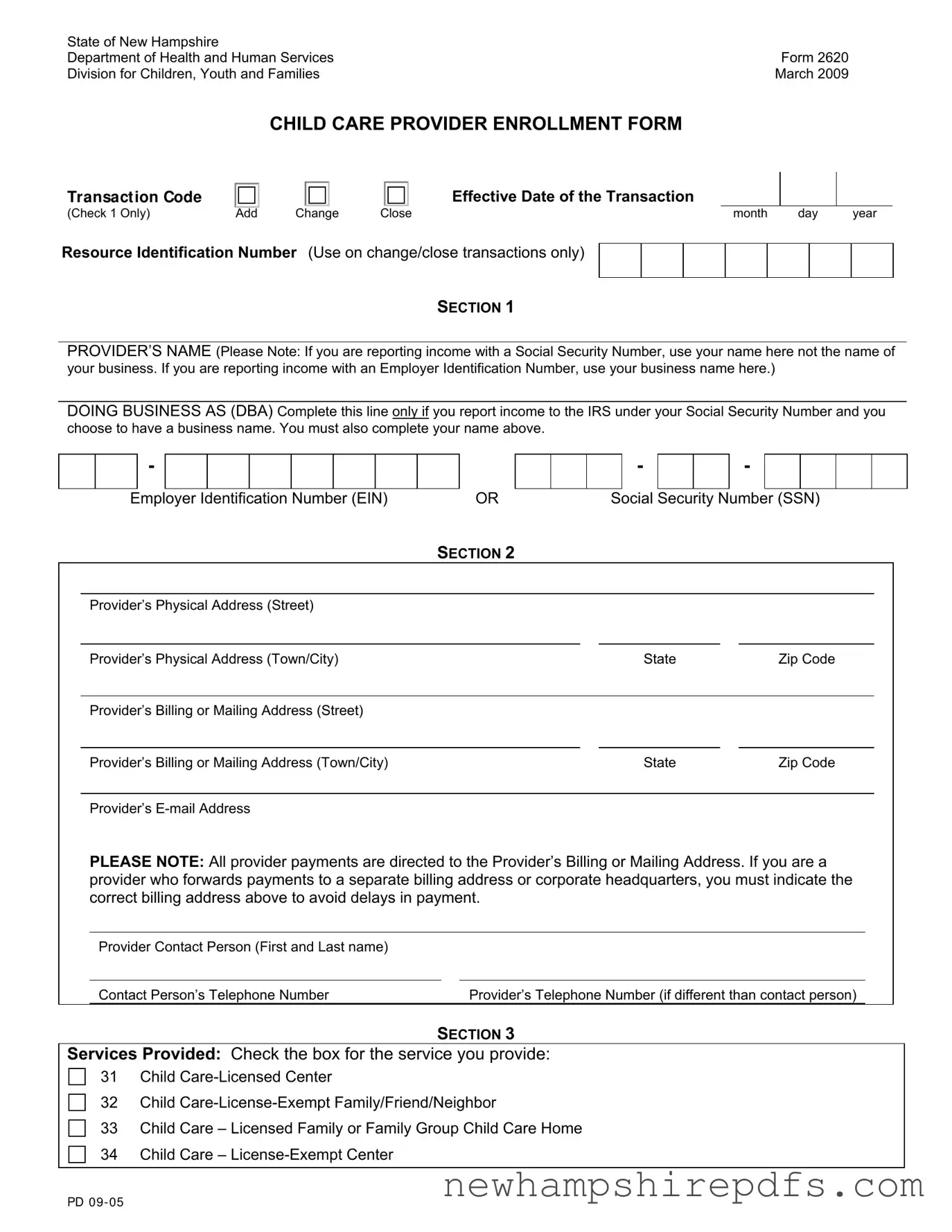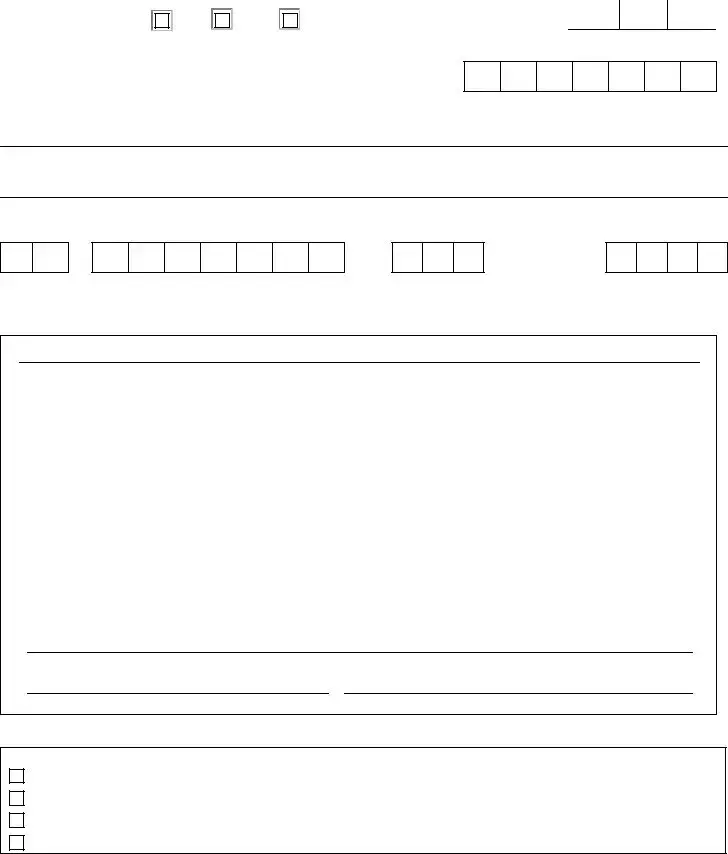What is the New Hampshire Form 2620 and who needs to fill it out?
The New Hampshire Form 2620 is an enrollment form for child care providers who wish to receive payment from the Department of Health and Human Services (DHHS) for childcare services. It must be completed by all providers seeking payment for services provided, ensuring they adhere to department rules, regulations, policies, and procedures.
What are the different service types listed on Form 2620?
Form 2620 lists four types of child care services for which a provider can enroll: 31 Child Care-Licensed Center, 32 Child Care-License-Exempt Family/Friend/Neighbor, 33 Child Care – Licensed Family or Family Group Child Care Home, and 34 Child Care – License-Exempt Center. Providers must check the box corresponding to the service they provide.
How do I report income on Form 2620?
When completing Form 2620, the way you report income depends on whether you use a Social Security Number (SSN) or an Employer Identification Number (EIN). If reporting income with an SSN, enter your personal name in section 1. For those reporting with an EIN, the business name should be used instead.
Can I have a business name on Form 2620 if I report income under my Social Security Number?
Yes, you can. If you report income to the IRS under your Social Security Number but have a business name (Doing Business As - DBA), you can include this on the form provided. You must also complete your legal name in the space provided above the DBA section.
What should I do if I need to change my information after I've enrolled?
To report any changes such as address, incorporation, or provider name after your initial enrollment, you must fill out a new Form 2620 and an ALTERNATE W-9 FORM. These forms should be sent together to the address listed on the form for the Department of Health and Human Services.
What is the Resource Identification Number on Form 2620 for?
Upon enrollment, all child care providers are assigned a Resource Identification (ID) Number. This number is crucial for billing purposes, as it must be included on all billing invoices submitted to DHHS. It's a unique identifier for your services.
Where do I send the completed Form 2620 and associated documents?
Once completed, Form 2620 along with the ALTERNATE W-9 FORM should be mailed to the Department of Health and Human Services, Data Management Unit, Box 2000, Concord, NH 03302-2000. This submission is necessary for the enrollment process.
Am I responsible for paying taxes on payments received for child care services?
Yes, the Department of Health and Human Services does not withhold tax money for individuals receiving payments for services. As such, the responsibility of paying taxes on these payments lies with the individual provider.

